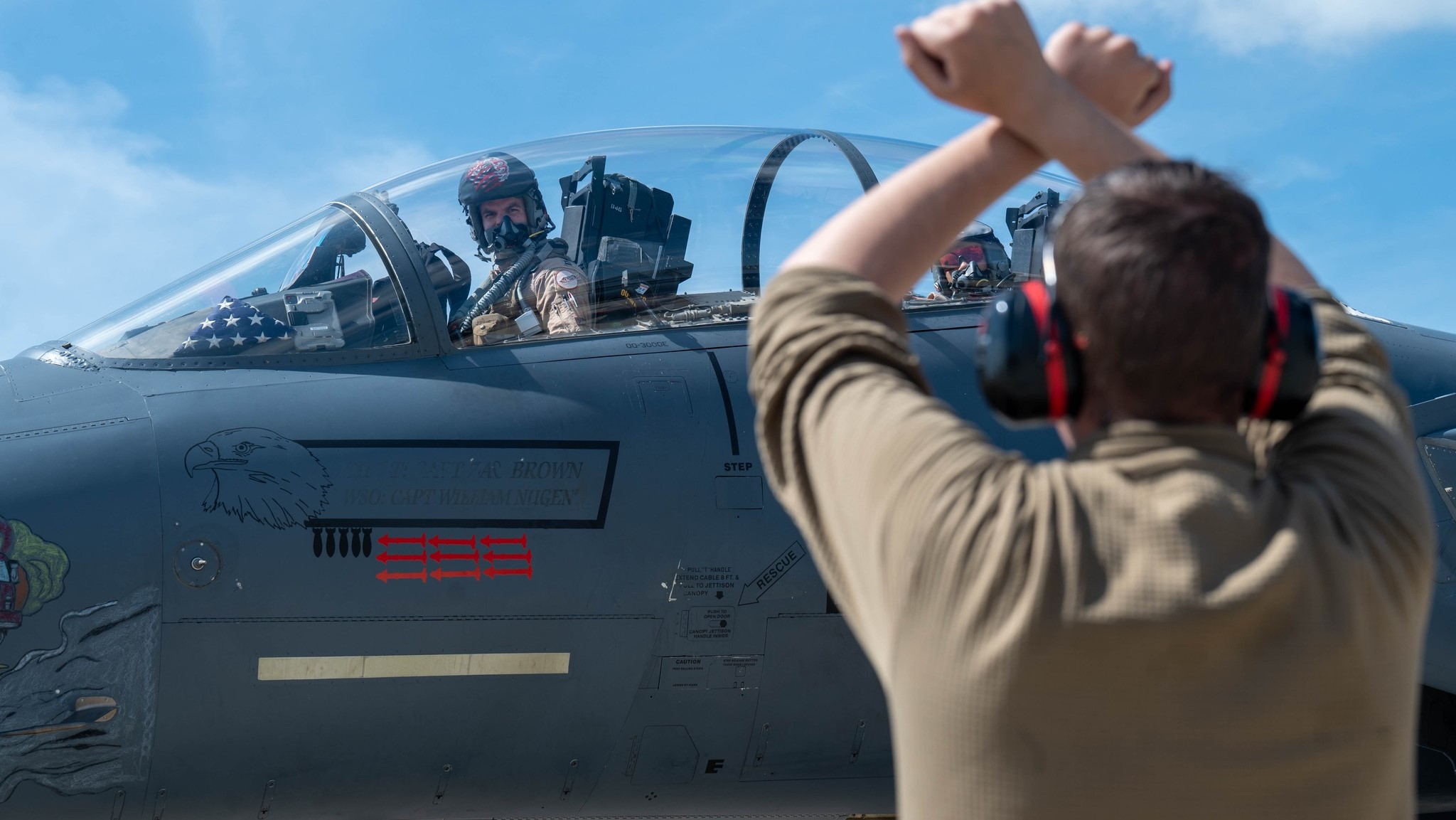

One of the fighter squadrons that helped shoot down dozens of Iranian missiles last month has some fresh paint honoring those kills.
F-15E Strike Eagles and their pilots with the Air Force’s 494th Expeditionary Fighter Squadron returned back to base at RAF Lakenheath in the United Kingdom this week. Amid reunions with family and friends, photos taken on the return show the F-15E’s with new kill markings and paint on the nose of the fuselage.
The photos, shared by the 48th Fighter Wing on social media and posted by the military to the Defense Visual Information Distribution Service, show the F-15Es lined up on a runway. Along their nose they have new paint markings, including several bomb markings and the silhouettes of AIM-9X Sidewinder air-to-air missiles. The markings suggest air-to-air kills, and there are many of them.
The operation took place last month, when Iran and its allies in Yemen, Iraq and other parts of the Middle East fired dozens of drones and ballistic missiles, as well as several cruise missiles, toward Israel. The 494th Expeditionary Fighter Squadron was part of a major multinational operation that shot down more than 300 Iranian missiles and drones. The attack was launched in retaliation over the bombing of an Iranian diplomatic compound in Syria.
Alongside the 335th Fighter Squadron, based out of Seymour Johnson Air Force Base, jets from the 494th took to the skies on April 13-14, shooting down more than 80 one-way attack drones fired by Iran and its partners in the Middle East. The two squadrons made so many kills in “dozens of engagements” that Task & Purpose previously noted the math suggests that more than one Air Force pilots likely made “ace” status from the weekend operation. It’s unclear how many of the kills in the markings are specifically from the April 13-14 sortees, but there is a strong chance several are, given the amount of interceptions. The squadrons and Air Force Central have not said if any pilot became an ace from the mission.

One plane, “Hellcat,” is rocking nine AIM-9X silhouettes in red, along with many more bomb symbols in black. Yet another, There is some disparity on the size of the markings; “Strafe,” has a large missile kill marking while “El Jefe” sports a smaller symbol in line with the other jets. The F-15E belonging to “Rawr” has an unusual one, showing what appears to be a ground-based system, either a rocket launcher or a radar dish, suggesting that the 494th and the 335th might have hit more than just drones while on the weekend interception mission.
Subscribe to Task & Purpose Today. Get the latest military news and culture in your inbox daily.
The F-15Es are back at their base in the U.K. after a seven-month deployment to the Middle East. The F-15s were operating out of Al-Azraq Air Base in Jordan, according to The Aviationist.
The April 13-14 mission was a multinational one, with American, British and other militaries scrambling to intercept missiles and drones over Yemen, Iraq, Syria, Jordan and Israel. Almost all of the drones, ballistic and cruise missiles were taken out before they could hit Israel; only one person was reported wounded in the attack.
As Task & Purpose previously noted, air forces have previously counted large uncrewed aerial weapons such as the Nazi rockets in World War II as aerial kills.
So far the F-15s from the 335th Fighter Squadron haven’t been spotted with any signs of victory markings or kill marks. However if the 494th’s new paint job is any indication, they might soon.
The latest on Task & Purpose
- Marine breaks world record in deadlift competition
- Army says combat patches memo on social media is ‘not valid’
- Army trainee dies in basic training at Fort Jackson
- How grooming standards have changed in the U.S. military
- A soldier reenlisted while taped to a Howitzer cannon and that’s awesome